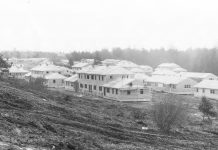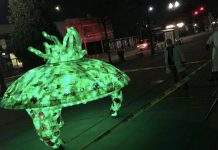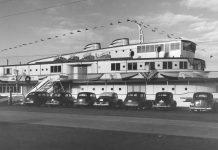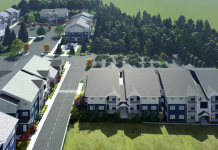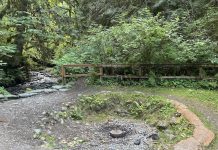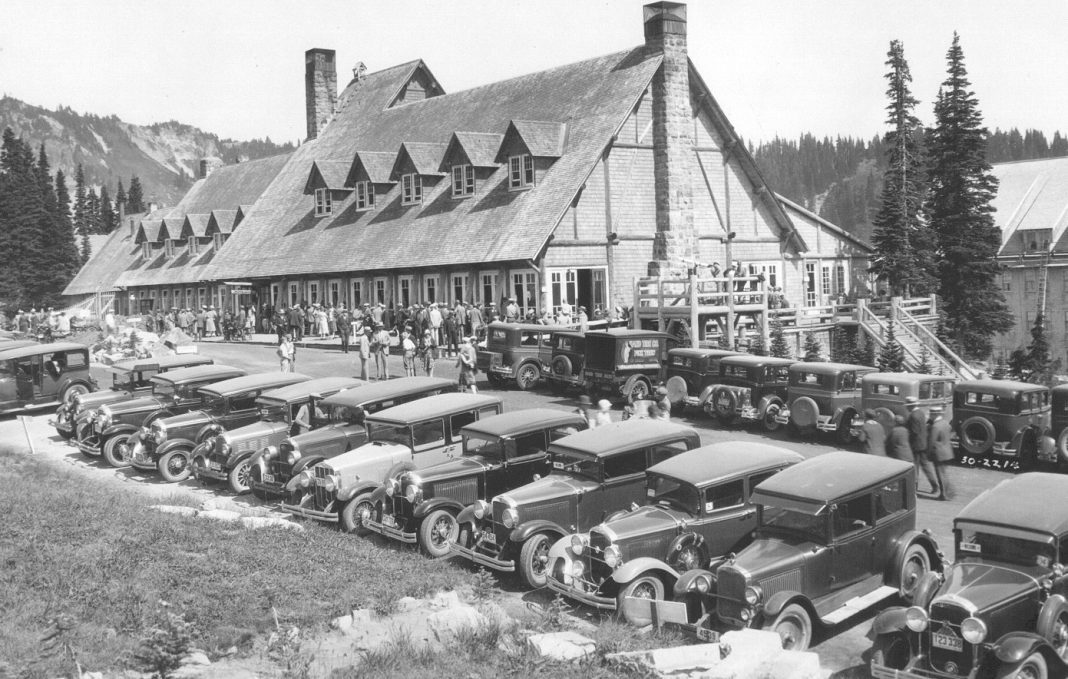Mount Rainier National Park, a captivating gem in the majestic Cascade Range of Washington state, has a rich history spanning centuries. The park has transformed remarkably from its ancient volcanic origins to its present-day role as a symbol of environmental stewardship here in the South Sound.
As a result, it has attracted a myriad of wayward travelers throughout the decades looking to explore the mountain’s mighty peaks. Naturally, these adventurers need a place to lay their weary heads, and accommodating them all these years are three historic lodges that have been happy to host the guests of Mount Rainier National Park.
Paradise Inn
Located in the southwest corner of the park, it’s easy to see where Paradise Inn gets its name as there are few locations within the entire national park system with stunning views. The aptly named inn is nestled on the south slopes of the glacier-shrouded volcano at an elevation of 5,400 feet with magnificent views of wildflower meadows, just 19 miles inside the southwest Nisqually entrance of the park.
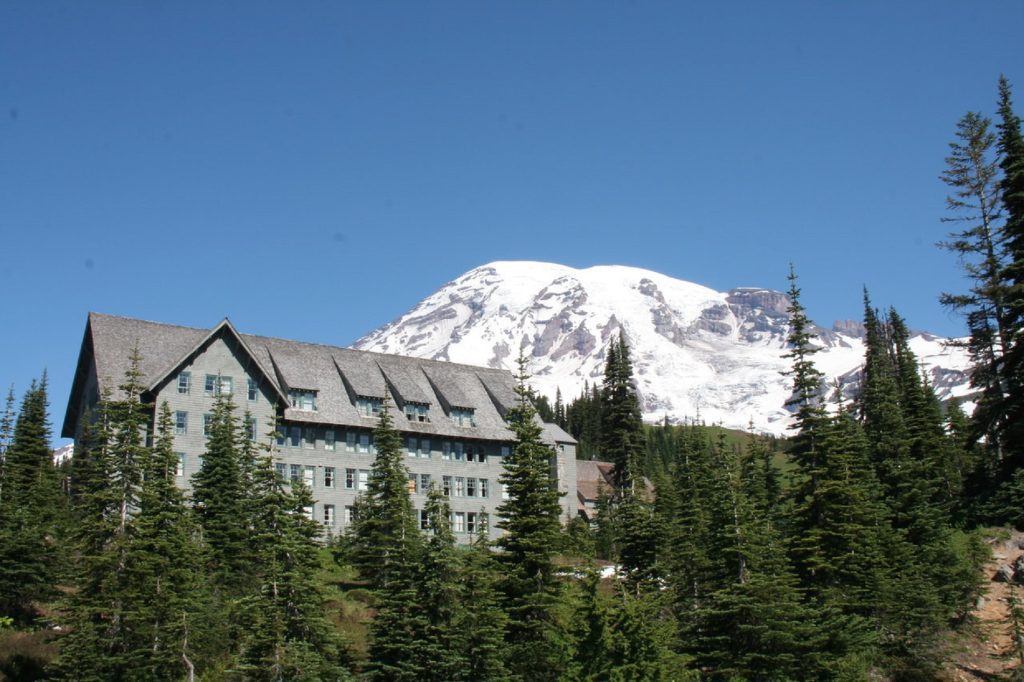
Nowadays, getting there is easy, but that wasn’t always the case. Visitors in the early 1900s weren’t much content to end their trip at Longmire Springs. With tales of Paradise’s beauty having traveled far and wide, they were determined to continue their journey to experience the panoramic views and wildflower meadows that have made Paradise the most popular area in the park.
From Longmire Springs, they would take the trail built by Leonard Longmire and Henry Carter in 1892. After paying a small toll, visitors proceeded upwards, often stopping at Carter Falls and Narada Falls to rest.
Eventually, a coffee shop called the Paradise Hotel and a tent camp were established in early 1895, providing services to the ever-increasing numbers of people visiting the area. John L. Reese later combined these two operations in 1898, naming it Camp of the Clouds. In the beginning, visitors had generally been satisfied with the camp, but as time passed, they began to want nicer accommodations, with a demand for better sanitation increasing in 1911. It was the first full season that it was possible to take horse-drawn vehicles to the camp, creating an influx of travelers who were just as weary.
As the need increased for a hotel and other services in the Paradise area, a corporation of local Tacoma business people came together to form the Rainier National Park Company (RNPC). As they began construction of Paradise Inn, John Reese decided to sell his camp to the RNPC in 1916 so that it could be used to house construction crews as they worked tirelessly on the new and improved first-class inn. It was nearly complete when summer rolled around, initially costing only $91,000, not including furnishings or equipment.
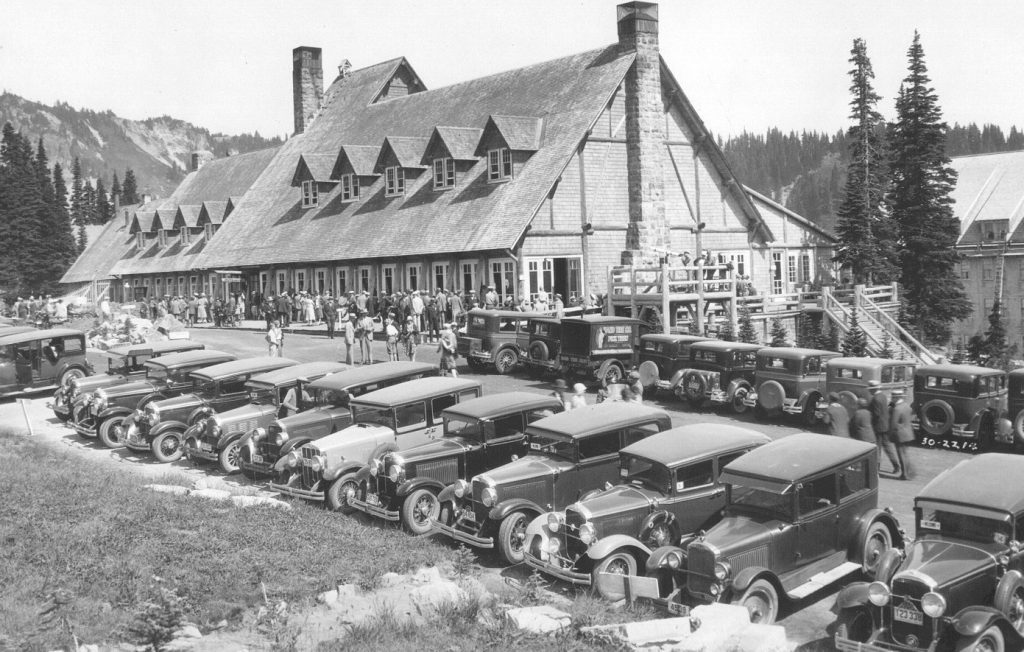
German carpenter Hans Frahnke was the mastermind behind the inn’s decorative woodwork, having stayed there during the winter of 1919. His masterpieces remain throughout the inn, including imposing cedar chairs and tables, a rustic piano, and an ornate grandfather clock.
Paradise Inn officially opened for business in July of 1917 with 37 guest rooms and a dining capacity of 400 guests. In addition, platform tent structures had also been built behind the inn to house additional guests. However, by 1920 there was already an increased demand for other lodging. As a result, RNPC completed its first addition to the Paradise Inn, a 104-room wing they called the annex. Tents at the back of the inn were removed in 1930, and the RNPC continued to add on to Paradise, building 275 housekeeping cabins and a central service building with a cafeteria, camp store, and 40 guestrooms. The addition opened to the public on June 20, 1931, aptly naming it Paradise Lodge. Sadly it was burned to the ground in 1965 to make way for additional parking with the construction of the visitor center.
Through the ups and downs of the times and despite many changes over the years, Paradise Inn remains in its grand old state, barely changing from the 1920s-era resting place that it has always been for travelers. And still today, visitors agree that the views of massive glaciers, lush wildflower meadows, and breathtaking waterfalls of this region of Mount Rainier can only be described as, thus, paradise.
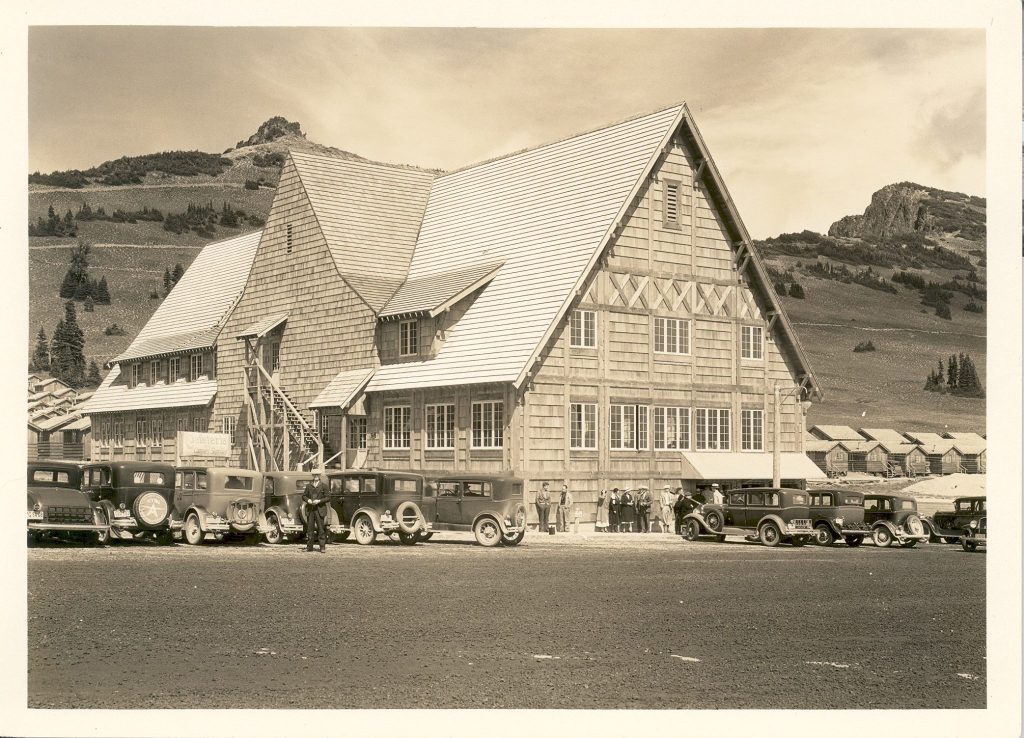
Sunrise Lodge
In the Northwest corner of Mount Rainier National Park sits Sunrise Lodge at 6,400 feet, making it Mount Rainier’s highest visitor center. Welcoming travelers from early July through late September, visitors are astounded by spectacular views of the massive Emmons Glacier and meadows of colorful wildflowers.
Generations of Yakima Indians had initially used the land, known as Yakima Park, as a summer hunting ground and a place to meet for religious festivities and celebrations throughout the season. When travelers to the Paradise area began to look elsewhere for room and board due to a lack of rooms, they saw an opportunity at Sunrise.
Park administrators and the concessioner, RNPC, set their sites on Sunrise, but it wasn’t without its challenges. Still, the development was hailed as the most coordinated planning effort by the National Park Service and the first instance of master planning of a complete area. By 1929 road construction projects were in place after the Bureau of Public Roads surveyed a route from the White River to Yakima Park. Hotel construction would be underway once the road was completed.
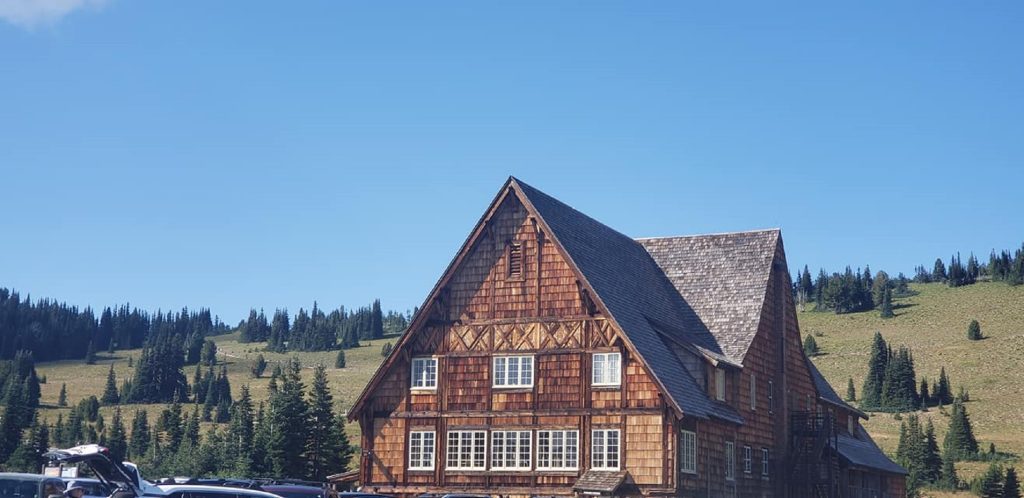
Just as it was nearing completion, controversy arose over the naming of the new development. Puget Sound region Boosters were lobbying for naming it Sunrise to avoid confusion with the city of Yakima, while the Yakima Chamber of Commerce wanted to keep the name, Yakima Park. A local rancher and friend of the Yakima Indians, L.V. McWhorter, pushed for naming it “Owhi’s Meadow” in honor of a Yakima Chief. Ultimately, the Park Service settled the dispute by using Sunrise for the development, Yakima Park for the physical landform, and Owhi for the Owyhigh Lakes.
Though a plethora of tourists drove up the new road to Sunrise after its opening on July 15, 1931, the lodge’s original 215 cabins did not endure the high elevation environment well and therefore weren’t as popular as initially hoped. Eventually, they were sold to a real estate company in 1944, meaning that there is no overnight lodging for today’s guests. Still, the road leading to Sunrise offers one of the most scenic drives in the county to this day, and a pullover at Sunrise Point offers views of five volcanoes, including Mount Rainier, Mount Baker, Glacier Peak, Mount Adams, and Mount Hood in Oregon. For those early risers, it is a spectacular experience you won’t soon forget, with a sunrise that will take your breath away.
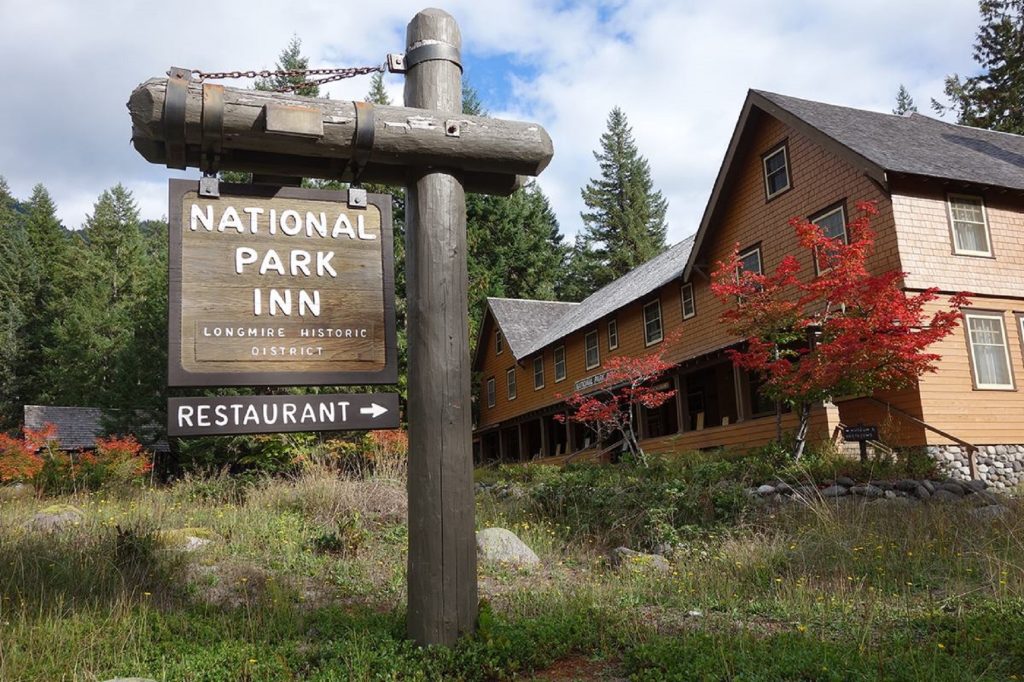
National Park Inn
On a crisp morning in 1883, James Longmire discovered what could only be described as a steamy oasis when he stumbled upon steam vapor billowing about the ferns and evergreens of Mount Rainier’s ancient forest. What he found was a mineral hot spring and a place of sheer beauty and wonder.
Initially, he had only been exploring with his partner, William Packwood, to develop a main route from Puget Sound to Mount Rainier. However, the discovery of the hot springs was too good to pass up, and he immediately filed a claim, constructed a rudimentary tail, handcrafted a small cabin, and sent for his family. They joined him to build and operate the first tourist inn on Mount Rainier.
“Longmire Springs” offered a small two-story split cedar by the summer of 1890, with five small guest rooms upstairs and a lower floor lobby. In addition, several bathhouses were built by digging out springs and sinking tubs into the ground, along with mineral baths. Guests could also enjoy mud baths and sulfur plunges.
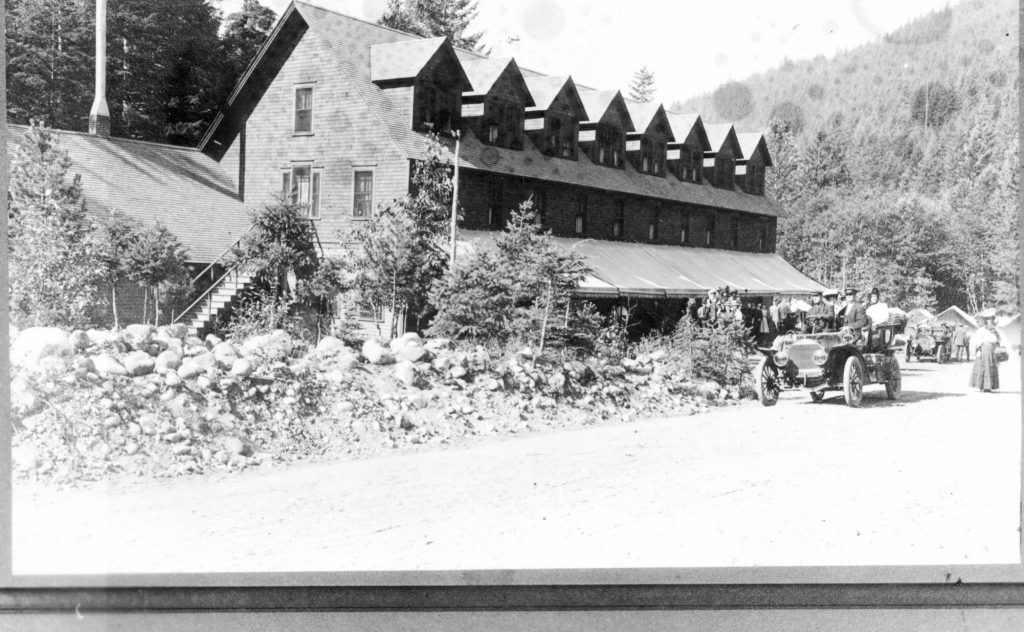
Longmire died a few years later, in 1897, two years before Mount Rainier would be established as a national park. His family was able to maintain the family business just fine up until 1906 when they faced their first competition with the construction of the National Park Inn, a three-story hotel that could accommodate up to 60 guests. Eventually, the Longmire Springs Hotel was burned down after being purchased by the RNPC. A few years later, a fire destroyed the original National Park Inn in 1926, but its annex remained untouched and now exists today as the National Park Inn.
Today, visitation to Mount Rainier National Park has grown beyond belief, hosting about two million people a year, and each year these historic lodges are more than happy to welcome these weary travelers with open arms time and time again.





